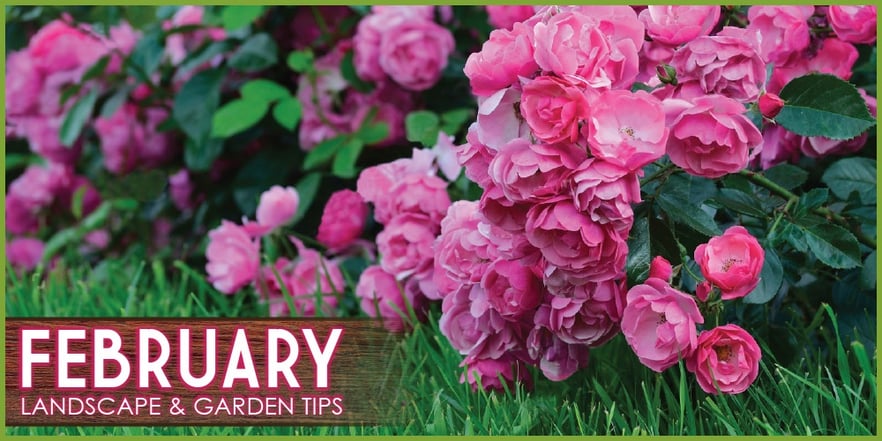
February is here which marks the beginning of the transition from the winter season to the spring season. There is no better time than now to prepare our landscape for the spring planting season which is right around the corner. Preparation and better care now will ensure a healthy and full landscape this spring. Our nursery pros have compiled a few tips, tasks, and ideas for your landscape this month.
To Do List:
- Planting: Those landscape plans you have been saving for the spring can finally become a reality. Planting just before spring season is ideal because it will give your trees and shrubs ample time to establish their root system before the spring and summer months arrive.
- Weeds: Control weeds with pre-emergent herbicides. Weeds are young and tender right now. Due to this, it is a smart idea to remove them before they become established and sprout. No one wants to pull weeds in the spring and summer once it's hotter outside. Using pre-emergent now will keep your yard weed free. Moon Valley Nursery stocks all of the things you will need for your weed prevention plan at our locations.
- Water: As the temperature starts to slowly get warmer during the month, it is extremely important to monitor your landscape for proper water usage. In the winter, cooler temperatures and less sunlight allow the soil to stay moist for a longer period of time. As the temperature increases, the soil may dry out faster, which means more frequent water usage. To check, touch the soil with your hand. If it is dry, then it is time to water.
- Vegetable Garden: In the vegetable garden plant tomatoes, peppers, oregano, thyme, basil, rosemary, and mint.
What To Plant:
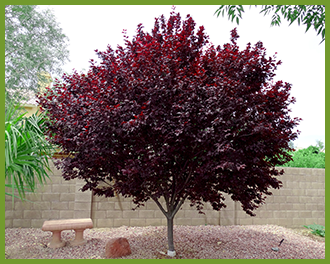 Purple Leaf Plum
Purple Leaf Plum
If you want to turn heads on your landscape, the Purple Leaf Plum is an excellent pick. This deciduous tree features magnificent deep-purple foliage and breathtaking blooms of puffy pink flowers in early spring. Though it can be planted alone, the Purple Leaf Plum really stands out in accent locations and against green backdrops, allowing its purple foliage to really stand out. It's cold and heat tolerant and as an ornamental tree, the Purple Leaf Plum produces no fruit and practically no litter. An excellent addition to any space where strong color is desired.
Flowering Pear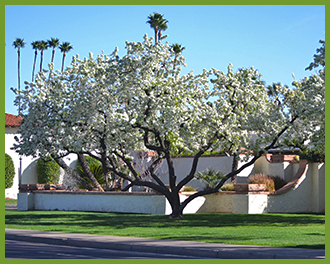
The Flowering Pear is desired on many landscapes for a variety of reasons. In the spring, the tree displays a wide and wonderful coverage of snow-white flowers. It gives off a formal looking appearance while producing a thick umbrella-shaped canopy. One of the most desirable aspects is the fiery red fall color that Flowering Pear trees gain in the fall, giving landscapers the rare opportunity to see and feel the changes in the seasons.
 Italian Cypress
Italian Cypress
Used for formal entrances, borders, and backdrops, the Italian Cypress is unmistakable with its lush green foliage and tall narrow upright form. Italian Cypress thrive in sunny climates a with minimal water making them a popular choice for just about any landscape.
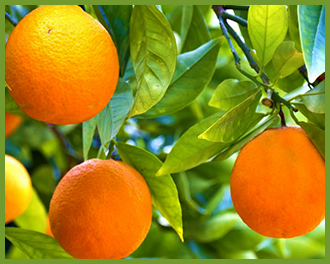 Orange Tree
Orange Tree
They are loaded with vitamin C, are a great source of fiber, and have several important minerals that we need. Oranges grow extremely well in the Western United States.
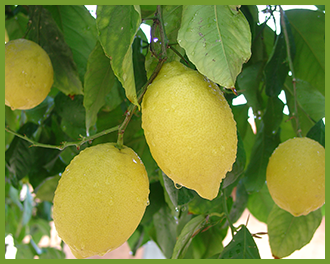 Lemon
Lemon
Where would our cooking be without lemons? This small fruit brings out explosions of flavor in our food and drinks. Lemons have many health benefits and can be seen all over residential landscapes. Lemons perform very well in the Western United State and are generally available all year, but peak in the summer months.
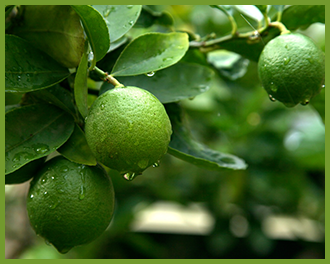 Lime
Lime
Packing a power punch for a fruit that is similar in size to a golf ball, the Lime has become an important citrus for cocktails, lemonade, fish, and meat. Lime trees are easy to grow and they perform well in many landscapes.
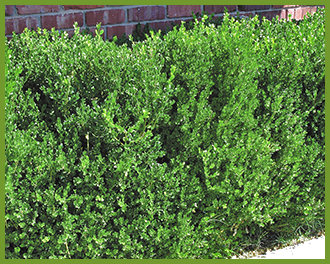 Japanese Boxwood
Japanese Boxwood
If you're looking to create a low to medium formal hedge, the Japanese Boxwood is a fantastic pick. This hardy evergreen has attractive green foliage and is a great choice for pruning into topiary or geometric shapes when desired.

Little John Bottlebrush
This isn’t the friend of Robin Hood and his Merry Men, but, in fact, a versatile and hardy shrub that produces dark red, bushy flowers during the spring and fall. The Little John Bottlebrush is commonly used as a nice formal hedge or an accent to a desert yard. Hummingbirds love the Little John Bottlebrush and these shrubs absolutely love the sun.
If you have any questions regarding proper maintenance or how one of these beautiful trees and shrubs would fit into your yard, be sure to contact one of our nursery pros at any of our nursery locations.

Submit a Comment